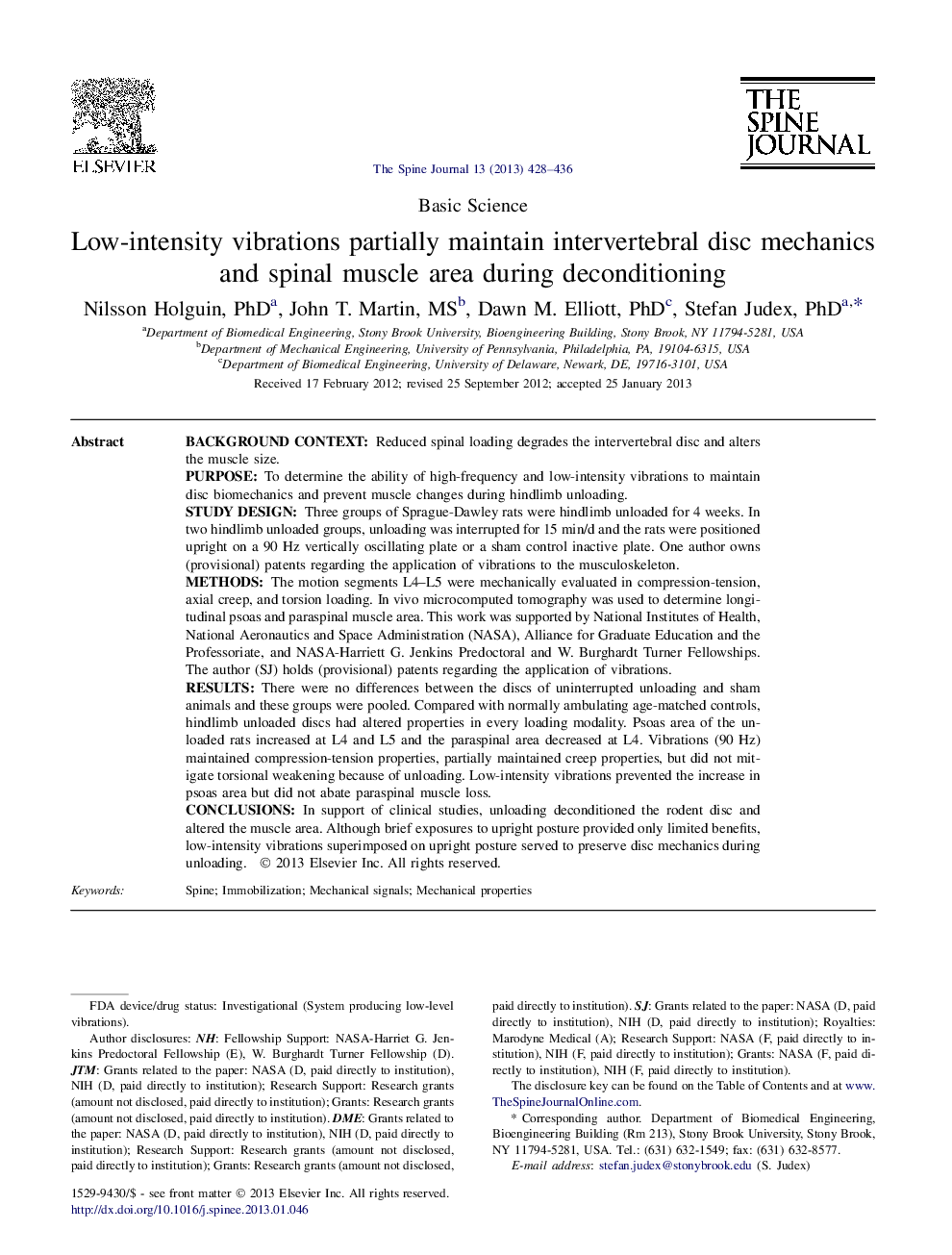| کد مقاله | کد نشریه | سال انتشار | مقاله انگلیسی | نسخه تمام متن |
|---|---|---|---|---|
| 6212671 | 1268587 | 2013 | 9 صفحه PDF | دانلود رایگان |
Background contextReduced spinal loading degrades the intervertebral disc and alters the muscle size.PurposeTo determine the ability of high-frequency and low-intensity vibrations to maintain disc biomechanics and prevent muscle changes during hindlimb unloading.Study designThree groups of Sprague-Dawley rats were hindlimb unloaded for 4 weeks. In two hindlimb unloaded groups, unloading was interrupted for 15 min/d and the rats were positioned upright on a 90 Hz vertically oscillating plate or a sham control inactive plate. One author owns (provisional) patents regarding the application of vibrations to the musculoskeleton.MethodsThe motion segments L4-L5 were mechanically evaluated in compression-tension, axial creep, and torsion loading. In vivo microcomputed tomography was used to determine longitudinal psoas and paraspinal muscle area. This work was supported by National Institutes of Health, National Aeronautics and Space Administration (NASA), Alliance for Graduate Education and the Professoriate, and NASA-Harriett G. Jenkins Predoctoral and W. Burghardt Turner Fellowships. The author (SJ) holds (provisional) patents regarding the application of vibrations.ResultsThere were no differences between the discs of uninterrupted unloading and sham animals and these groups were pooled. Compared with normally ambulating age-matched controls, hindlimb unloaded discs had altered properties in every loading modality. Psoas area of the unloaded rats increased at L4 and L5 and the paraspinal area decreased at L4. Vibrations (90 Hz) maintained compression-tension properties, partially maintained creep properties, but did not mitigate torsional weakening because of unloading. Low-intensity vibrations prevented the increase in psoas area but did not abate paraspinal muscle loss.ConclusionsIn support of clinical studies, unloading deconditioned the rodent disc and altered the muscle area. Although brief exposures to upright posture provided only limited benefits, low-intensity vibrations superimposed on upright posture served to preserve disc mechanics during unloading.
Journal: The Spine Journal - Volume 13, Issue 4, April 2013, Pages 428-436
